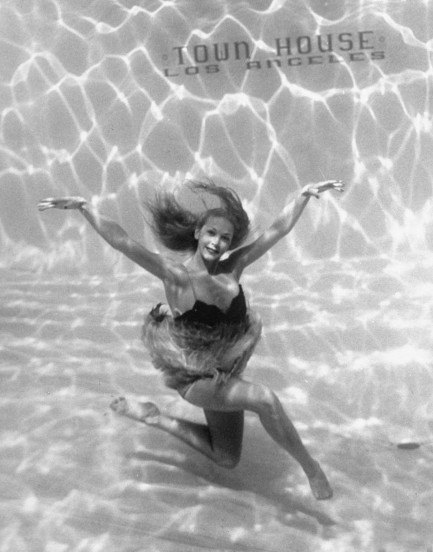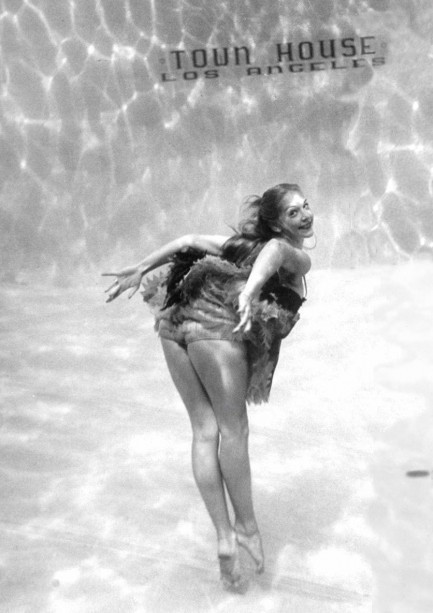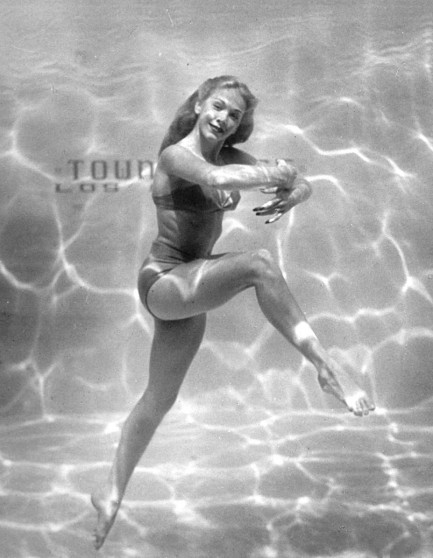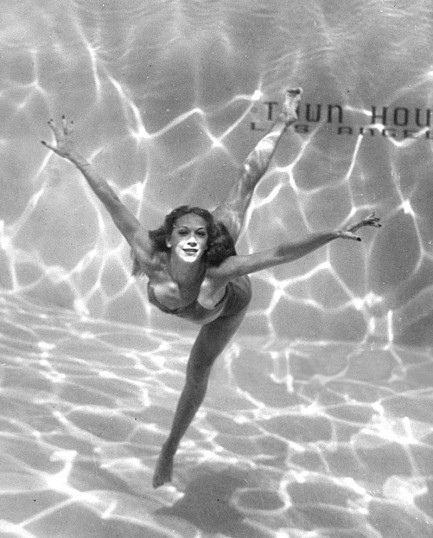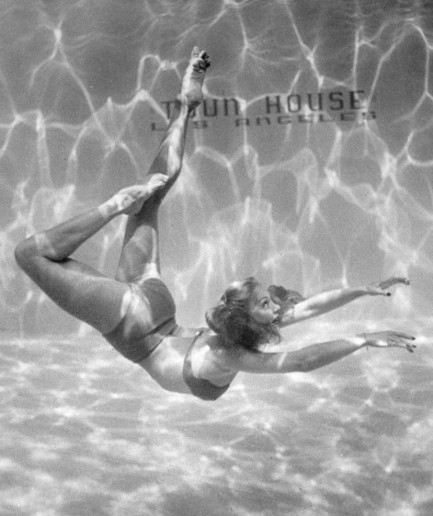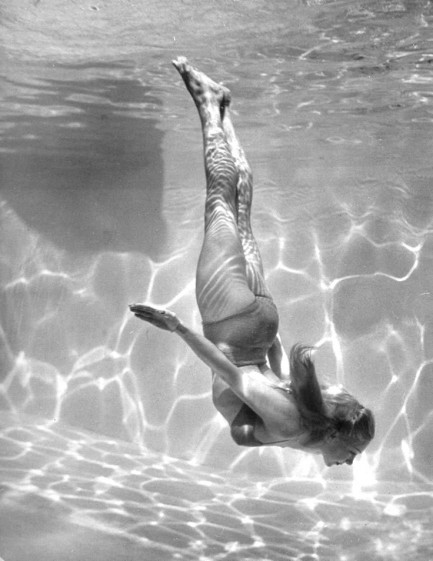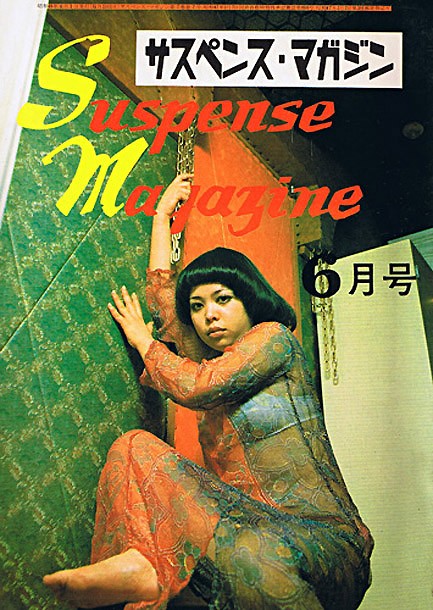| Femmes Fatales | Aug 10 2022 |

She's dressed for a funeral—yours.
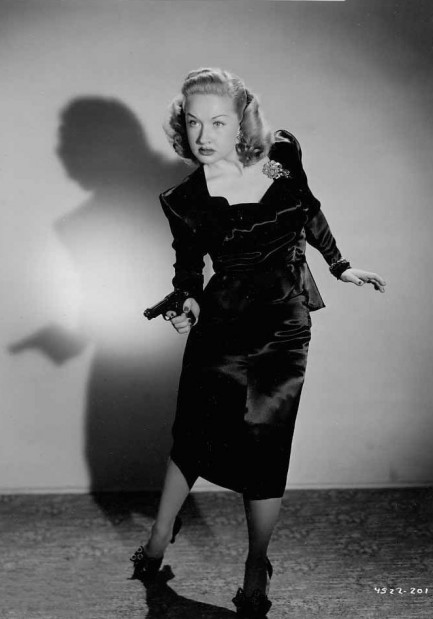
U.S. actress Bonita Granville appears to shoot from hip in this fun promo image made for her 1946 film noir Suspense, in which she starred with Barry Sullivan and Belita. In addition to the unusual pose and the shiny black dress, which we love, the lighting on this creates the illusion of the gun being fired. Granville was an acting prodigy. She began her career on stage at age three, was successful in cinema by age ten, and received an Academy Award nomination for Best Supporting Actress in 1936's These Three at age fourteen. We talked about Suspense several years ago, so if you're interested you can read about it here.
| Vintage Pulp | Jun 15 2022 |

Suspense so thick you could cut it with a sword.
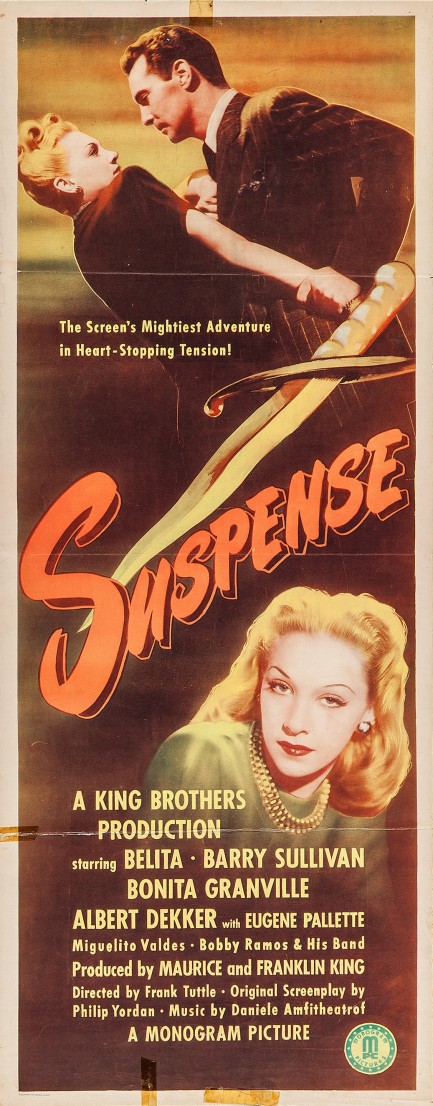
Above: an alternate poster for the 1946 film noir Suspense. This one is similar to the one we showed you before, except Belita gets to be front and center by herself. Swords—it looks like a knife but it's definitely a sword—feature prominently in the movie, so the use of one as a central element on the art is mandatory. You can read a little more here, and see a lovely image of Belita here.
| Vintage Pulp | Dec 3 2020 |

A favor turns fatal in MacDonald mystery.
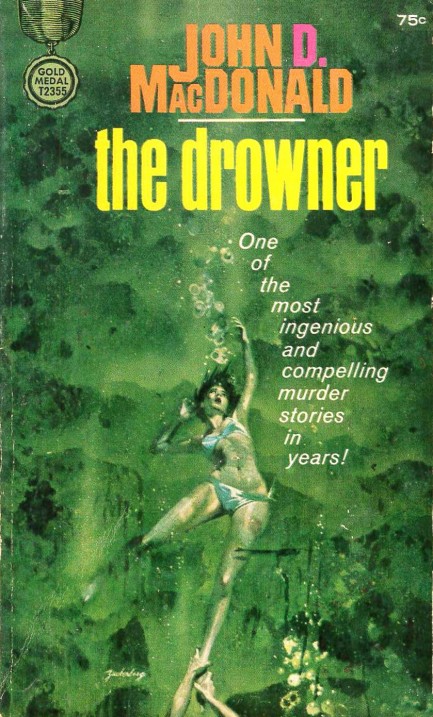
This is just the sort of eye-catching cover any publisher would want from an illustrator, an image that makes the browser immediately curious about the book. Since so many John D. MacDonald novels were illustrated by Robert McGinnis, and the female figure here has the sort of elongation you usually see from him, you could be forgiven for assuming at a glance that this is another McGinnis, but it's actually a Stanley Zuckerberg effort, clearly signed at lower left. We've run across only a few of his pieces, namely The Strumpet City and Cat Man. This is by far the best we've seen.
The story here is interesting. It begins with a woman having drowned in a lake and a sister who disbelieves the verdict of accidental death. She's right, of course, and the detective she hires soon agrees with her. The mystery is quickly revealed to involve taxes, deception, and money—specifically money the dead woman was supposed to keep safe and which has now disappeared. In an unusual move, MacDonald unveils the killer two thirds of the way through the tale, and the detective figures it out shortly thereafter. The final section of the book details his efforts to trap the villain.
This is the last book MacDonald wrote before embarking on his famed Travis McGee franchise. It was within the McGee persona that MacDonald indulged himself in often tedious sociological musings. In The Drowner his characters ring more true, but you can see signs of what is to come in several existential soliloquies concerning the state of the world and the various frail personality types that inhabit it circa 1963. For all our misgivings about the McGee books, they're still good. But we especially recommend any novel MacDonald wrote that came earlier, including this one.
Update: We got an e-mail from Pamela, who told us, "The plot seemed familiar, and sure enough - it was an episode of Kraft Suspense Theatre back in 1964."
We had a look around for it, with no expectations of success, but lo and behold, we found the episode on Archive.org, which often has public domain films and television shows on its platform. We watched the episode, which stars Aldo Ray, Clu Gallagher, and Tina Louise, and we have to say, John. D. MacDonald was probably thrilled. The adaptation is almost exact, with only a bit of license taken with the climax. The only thing he would have hated is that he's credited as John P. MacDonald. The only thing we hated was the lo-rez quality. Oh well. You can't ask for perfection when it comes to early television.
| Vintage Pulp | Jun 15 2017 |

Proceed carefully—ice may occur at major plot points.
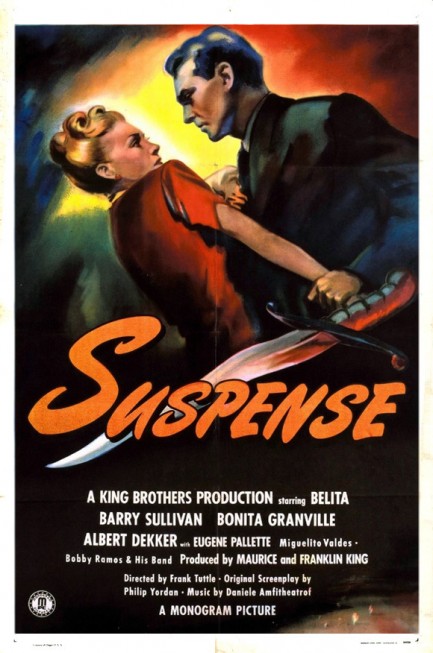
The thriller Suspense featured the unusual promo poster you see above, which we think really captures the visual feel of film noir in a way posters more typical of the genre do not. Those posters are amazing, but this one is a nice change of pace. The movie stars Olympic ice skater and sometime magazine model Belita, alongside Barry Sullivan, an incredibly prolific actor who appeared in scores of films. Sullivan plays a hustler who weasels his way up from lowly peanut vendor to fast living impresario at a wildly popular Los Angeles ice skating extravaganza. The catalyst for his ascent is his radical suggestion that Belita leap through a circle of swords. Only in old movies, right? “Hey, that circle of swords gag was a great idea! How'd you like to manage the joint!”
Belita's ice skater is a riff on the standard film noir chanteuse, except instead of doing a few a nightclub numbers she does a few skate routines. She's as good as advertised, too. But the success of any film romance hinges on the chemistry between the boy and girl and here it feels contrived. Both Belita and Sullivan are decent actors, but he's a little too charisma challenged, in our view, to attract someone whose life is going as skatingly as Belita's. But it's in the script, so okay, she likes the schlub. What Suspense does well, though, is visuals. For instance, if you check out the film watch what director Frank Tuttle does near the end when the shadow of the aforementioned sword contraption appears outside Sullivan's office. Beautiful work, suggesting that karma may indeed be a circle.
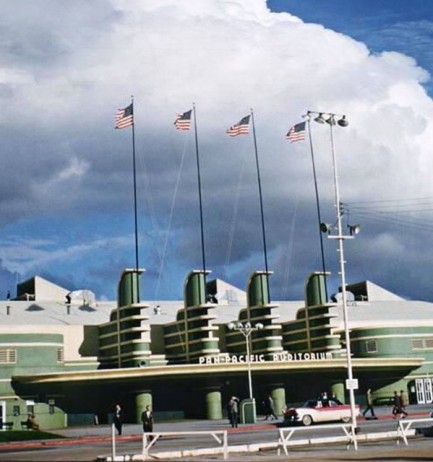 It occurred to us that on the whole, Suspense uses ice the same way Die Hard uses a skyscraper. The entire film is improved above the norm by the freshness of the unusual backdrop. Add expensive production values and visuals worthy of study in a film school and you have a noir whose many plusses cancel out its few minuses. We recommend it.
It occurred to us that on the whole, Suspense uses ice the same way Die Hard uses a skyscraper. The entire film is improved above the norm by the freshness of the unusual backdrop. Add expensive production values and visuals worthy of study in a film school and you have a noir whose many plusses cancel out its few minuses. We recommend it.As a side note, the ice show is staged in the Pan-Pacific Auditorium, one of the most breathtaking art deco structures ever built, which was of course eventually demolished because that's what they do in Los Angeles. Actually, a fire gutted it before a wrecking ball was brought in to finish the job, but the building had been abandoned for seventeen years, which would not have happened if anyone important in the city cared about historically significant architecture. Suspense brings the Pan-Pacific, just above, back to life, and that's another reason to watch it. It premiered in the U.S. today in 1946.
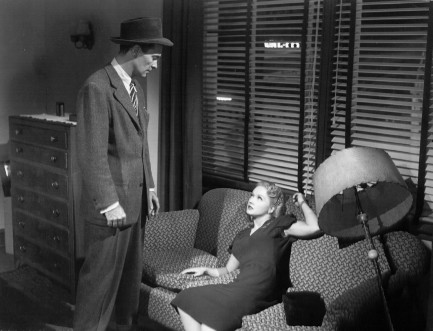 I'm going to stand right here in your personal space and repeat myself until you say yes.
I'm going to stand right here in your personal space and repeat myself until you say yes.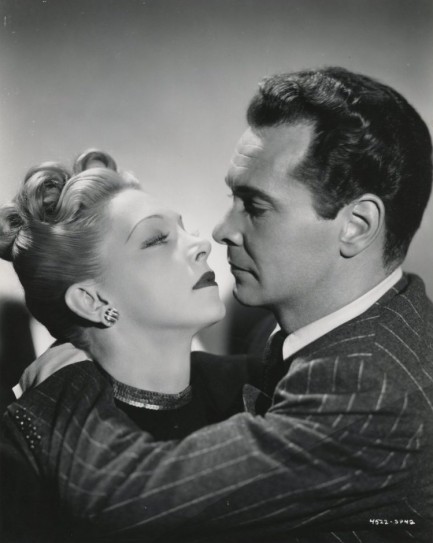 We're supposed to do a screen kiss, but I'm totally gonna slip you some tongue.
We're supposed to do a screen kiss, but I'm totally gonna slip you some tongue.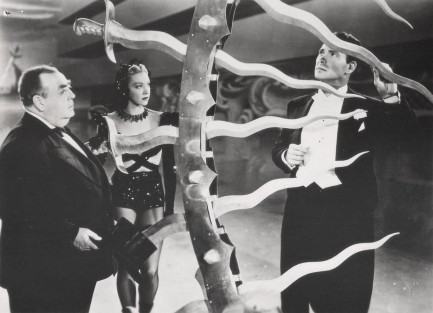 Wow, these are razor sharp, but you'll be fine. Unrelated question—how's your insurance coverage?
Wow, these are razor sharp, but you'll be fine. Unrelated question—how's your insurance coverage?| Hollywoodland | Aug 27 2016 |

Ice is nice, but harder than water.
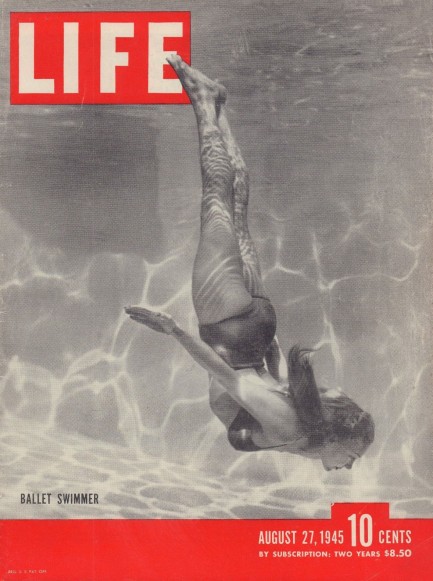
British skater and actress Belita, who was born Maria Belita Jepson-Turner, frolics in the pool at the Town House Hotel in Los Angeles for a cover of Life that hit newsstands today in 1945. We've shown you this pool before. A window from a swanky hotel bar known as the Zebra Room provided a view through one wall, which meant patrons could watch swimmers while enjoying cocktails. The hotel put together a group of women called Aqua Maidens who performed swim shows, but Belita was not a Maiden. She was already famous for skating in the 1936 Olympics (though she had finished only sixteenth), and had established a Hollywood career with 1943's Silver Skates and 1944's Lady, Let's Dance. She would also make 1946's Suspense, which was unique for combining skating with film noir.
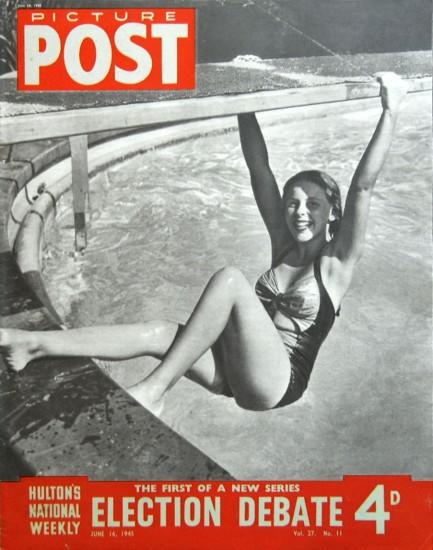 In addition to being an ace skater Belita was an accomplished dancer, and the Life photos show her demonstrating her underwater ballet skills. She even wears a tutu in a couple of shots. Interestingly, Picture Post, a British Life-like magazine that was considered imitative, had already featured Belita on its cover, also at the Town House, two months earlier on June 16, 1945. Doubtless both sets of photos were from them same session. So in this case Life was the imitator.
In addition to being an ace skater Belita was an accomplished dancer, and the Life photos show her demonstrating her underwater ballet skills. She even wears a tutu in a couple of shots. Interestingly, Picture Post, a British Life-like magazine that was considered imitative, had already featured Belita on its cover, also at the Town House, two months earlier on June 16, 1945. Doubtless both sets of photos were from them same session. So in this case Life was the imitator.Belita wasn't the most famous ice skater in Hollywood during the 1940s—Sonja Henie was a huge star, and Vera Ralston was probably better known as well. That may be one reason why Belita managed only eight or nine films before moving on to other pursuits. She eventually retired to the village of Montpeyroux, France, where she died in 2005 at age eighty-two. But the photos below are eternal.
